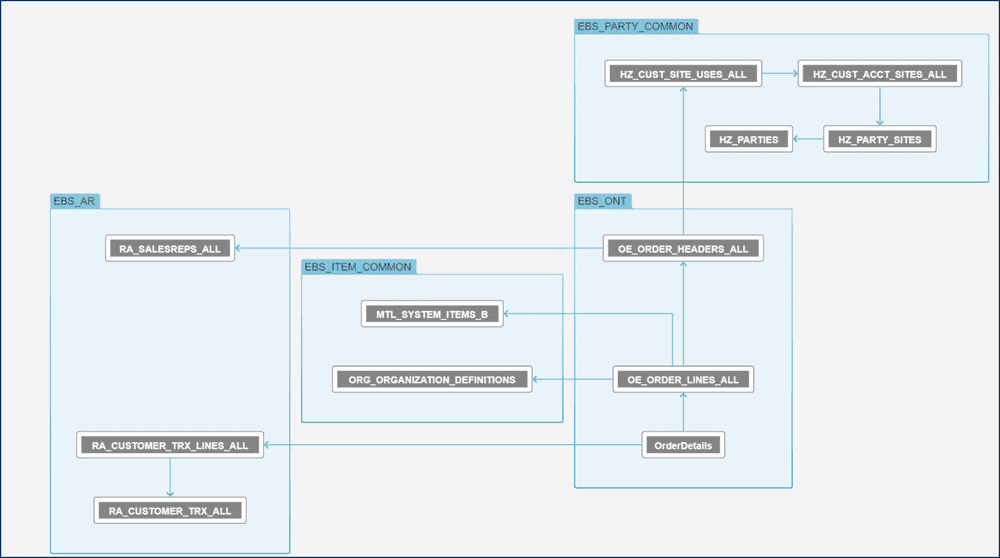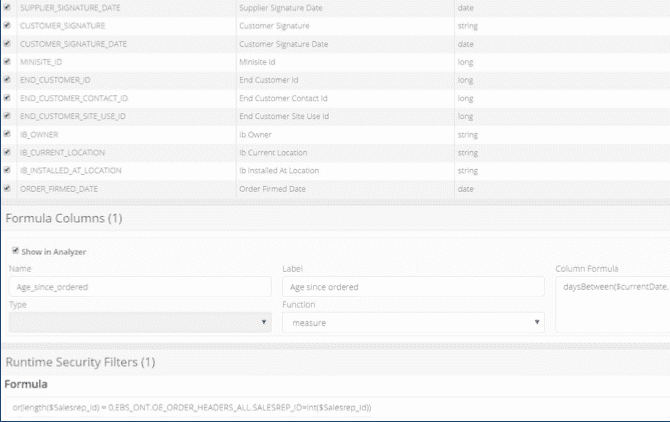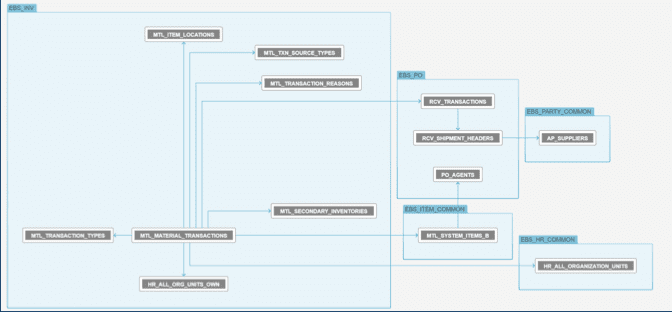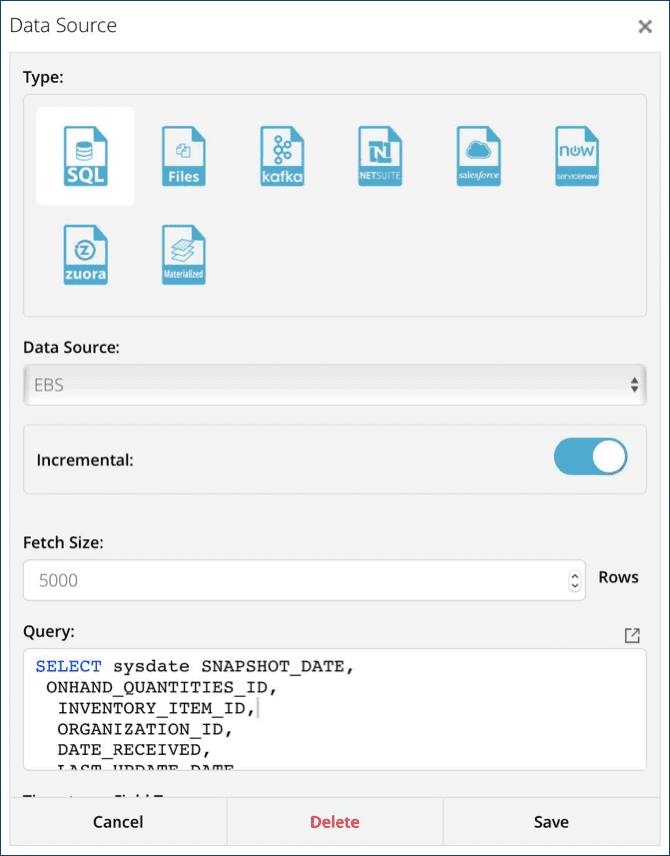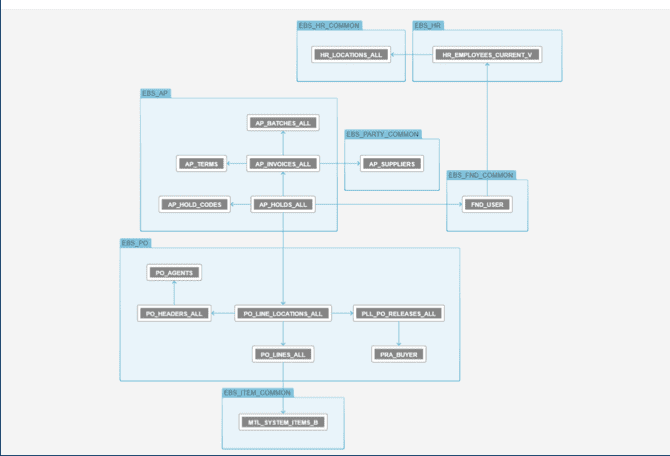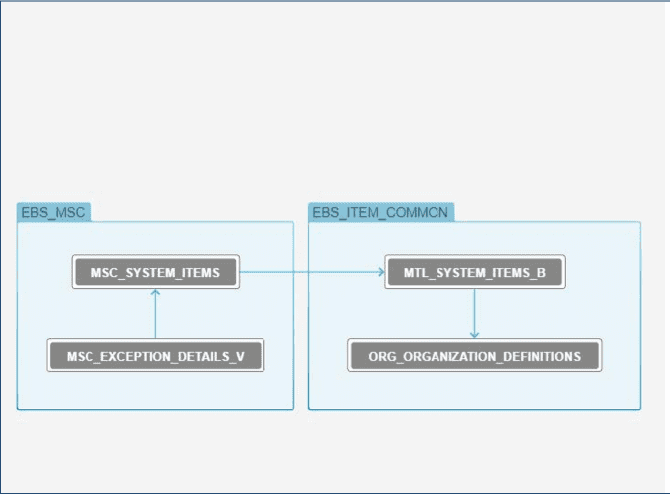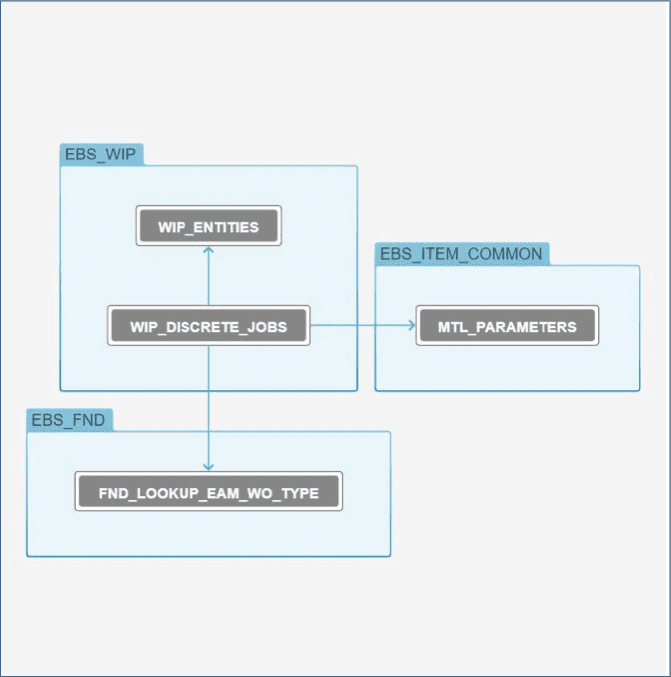Implement EBS Analytics for Supply Chain
Order Management drives the order fulfillment process of any business. The Order Management (OM) and Inventory Analytics delivers customer insights into the orders and inventory data that helps organizations in the entire Supply chain management lifecycle take informed decisions.
Sales orders are the entry points for the sales process, while Invoices (Account Receivables module) are the exit points from the fulfillment process. Customers needs visibility into which items are booked, backlogged, and invoiced to evaluate the sales performance of individual sales representatives or departments.
The Dashboards provides insights into the following:
- Order & Fulfillment effectiveness
- Customer Performance
- Employee Performance
- Inventory Visibility
OM Data Model
Order Management (OM) Configuration
To configure the OM module, ensure the following schemas, business schemas, and dashboard folder exist:
Required schemas:
EBS_ONTEBS_WSHEBS_AR (RA_CUSTOMER_TRX_ALL,RA_CUSTOMER_TRX_LINES_ALL, RA_SALESREPS_ALL)- COMMON schemas like
EBS_ITEM_COMMON,EBS_CAL_COMMON,EBS_FND_COMMON,EBS_HR_COMMON,EBS_FIN_COMMON,EBS_PARTY_COMMON.
Business Schema
- Order Management
Dashboard Folder
- Order Management - Few dashboards have drill-down to other dashboards. Look for the column name with ””. Selecting those will take you to separate reports. For example, “Delivery Performance (With Drills)” dashboard has the “Sales Rep Name” column. Selecting on the ”” to go to another report with the customer name. Selecting on that will drill to a new report, and so on.
Data security (Optional)
You can set the security level using a Session Variable to support the following:
- Restrict sales representatives, i.e. SalesRep, to see their data only.
- Restrict sales managers, i.e. SalesMgr, to see their data only.
The list of users to be secured by Salesrep Id will be populated in a custom file called salesrep_security.csv and will be used to populate a table called Custom.SalesRepSecurity.
You can get the SalesRep Id for the logged-in user by populating an internal Session Variable ($Salesrep_ID) using this expression:
query(Custom.SalesRepSecurity.SALESREP_ID,Custom.SalesRepSecurity.LOGIN=$user)
Then a security filter is created on the table level, for the tables listed below:
or(length($Salesrep_Id) = 0, inList(EBS_ONT.OE_ORDER_HEADERS_ALL.SALESREP_ID , $Salesrep_Id)
This condition will turn true for all the users, if the user does not exist in the security table. For other users, it will add an implicit condition to any query on the table, so that every user will only see the records either for their own teams or their own salesrep id.
EBS_ONT.OE_ORDER_HEADERS_ALLEBS_ONT.OE_ORDER_LINES_ALLEBS_ONT.OrderDetails
Validation SQL
You can use the following SQL statement to validate the Incorta output data versus the source data base.
select count(distinct ohead.order_number) order_count,
sum(NVL (OLINE.ORDERED_QUANTITY, 0)) ORDERED_QUANTITY
FROM apps.OE_ORDER_HEADERS_ALL OHEAD,apps.OE_ORDER_LINES_ALL OLINE
WHERE OLINE.HEADER_ID = OHEAD.HEADER_ID AND oline.schedule_ship_
date between '01-Jan-2018' and '31-Mar-2018' and oline.flow_status_
code in ('AWAITING_FULFILLMENT','AWAITING_SHIPPING','AWAITING_
RETURN','BOOKED') and OHEAD.flow_status_code = 'BOOKED' ;Inventory (INV) Analytics
INV functional module overview
This module provides insights into inventory levels and operations. Use the following steps for configuration information:
INV Data Model
INV Configuration
In order to successfully configure the INV module, ensure that the following schemas, business schemas, and dashboard folder exist:
Required schemas:
EBS_INV- COMMON schemas like
EBS_ITEM_COMMON,
EBS_CAL_COMMON,EBS_FND_COMMON,
EBS_HR_COMMON,EBS_FIN_COMMON,
EBS_PARTY_COMMON.
Business Schema
- InventoryItem
- InventoryMetrics
- ItemList
- MaterialTransactions
Dashboard Folder
- Inventory
INV Configuration steps
- In the
EBS_INVMTL_ONHAND_QUANTITIEStable, there is a filter, i.e. COST_TYPE_ID = 1, in the SQL query, which can be modified to compute the item cost, depending on the installation. -
A snapshot is set to load from the Inventory table
MTL_ONHAND_QUANTITIES_SN, in theEBS_INVschema. The table is scheduled to load daily from the data source. However, the snapshot loading date can be modified to a different frequency using the SQL query editor in the table details page. To modify the SQL statement:
Purchase Order (PO) Analytics
This module provides data regarding different purchase order types, including Standard Purchase Order, Planned Purchase Order, Blanket Purchase Agreement, and Contract Purchase Agreement. Use the following steps for configuration information:
PO Data Model
PO Configuration
In order to successfully configure the PO module, ensure that the following schemas, business schemas, and dashboard folder exist:
Required schemas:
EBS_PO- COMMON schemas like
EBS_ITEM_COMMON,
EBS_CAL_COMMON,EBS_FND_COMMON,
EBS_HR_COMMON,EBS_FIN_COMMON,
EBS_PARTY_COMMON.
Business Schema
- PurchaseOrder
- Receiving Transactions
- SpendOverview
Dashboard Folder
- Purchasing
Advanced Supply Chain Planning (ASCP)
The ASCP module provides insights into planning the extended supply chain.
Data Model
ASCP Configuration
In order to successfully configure the ASCP module, ensure the following schemas, business schemas, and dashboard folder exist:
Required schemas:
EBS_MSCEBS_MSC_SNEBS_MRP- COMMON schemas like
EBS_ITEM_COMMON,
EBS_CAL_COMMON,EBS_FND_COMMON,
EBS_HR_COMMON,EBS_FIN_COMMON,
EBS_PARTY_COMMON.
Business Schema
- SupplyDemandPlanning
- VCPMeasures
- VCPExceptions
- Forecast
Dashboard Folder
- Purchasing
- Purchasing->Buyer Dashboards
The Excel add-in works for the latest version of Excel and Windows.
Enterprise Asset Management (EAM)
The EAM module provides information about operational details regarding the number of planned/unplanned work order, the number of open/urgent work requests, and on-time completion percentage across organizations and Asset Groups.
EAM Data Model
EAM Configuration
In order to successfully configure the EAM module, ensure the following schemas, business schemas, and dashboard folder exist:
Required schemas:
EBS_WIP- COMMON schemas like
EBS_ITEM_COMMON,EBS_CAL_COMMON,EBS_FND_COMMON,EBS_FND,EBS_FIN_COMMON,EBS_PARTY_COMMON.
Business schemas:
- EnterpriseAssetManagementWorkRequest
- EnterpriseAssetManagementWorkOrders
Dashboard Folder:
- Enterprise Asset Management
